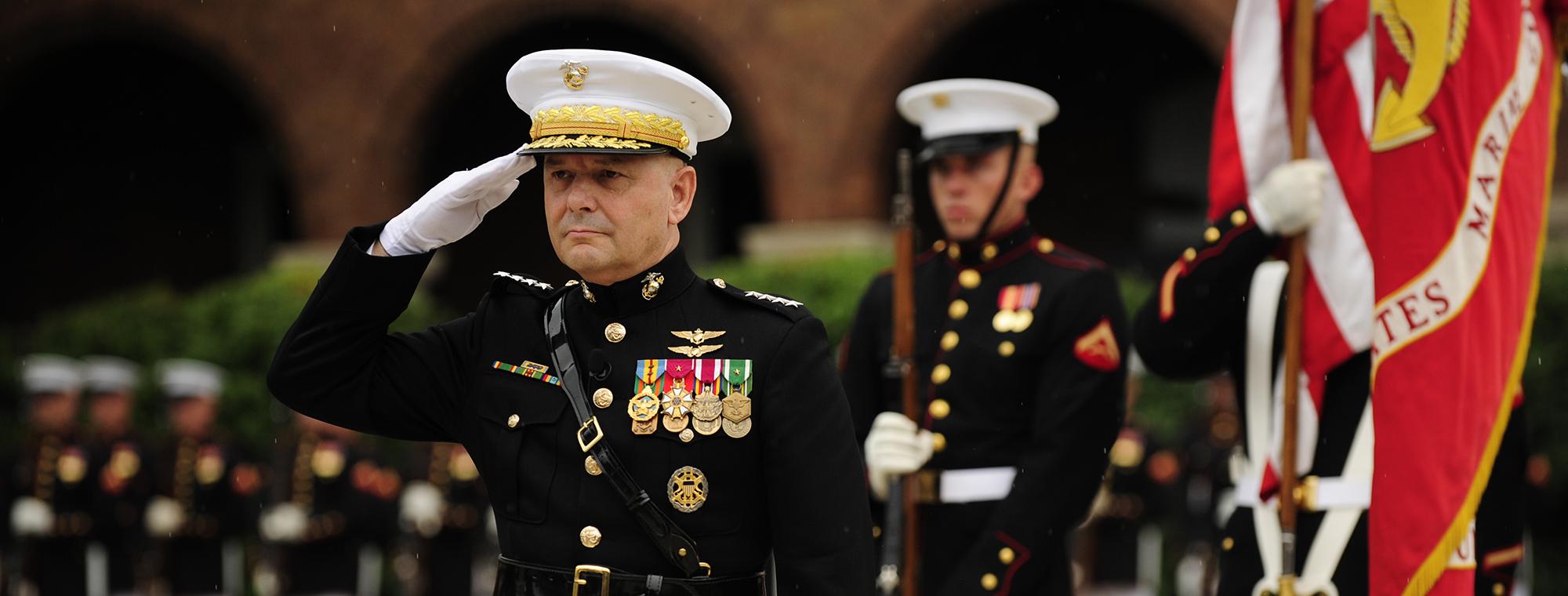Speaking in Berlin in 2013, President Barack Obama offered to reduce US deployed strategic nuclear forces to about 1,000 warheads, or one-third below the limits of the 2010 New START Treaty. This is sound policy, as the US military has determined that it can ensure the security of the United States and its allies at this lower level. But the president made the offer contingent on gaining agreement from Russia to follow suit. Moscow balked, and no agreement was reached.
This was a major missed opportunity for the United States and global security that the next administration should not repeat. The United States should reduce its nuclear forces because it serves US national security interests to do so, regardless of Russia. There is no reason to retain unneeded weapons just because Russia does. Moscow does not, and should not, have a veto over US actions.
Our strategic deterrence thinking, policies, strategies and operational and organizational constructs come from the bipolar superpower rivalry of the Cold War. While various strategy reviews have tweaked that approach, mutually assured destruction remains a strategic silo, largely unaffected by the realities of the challenges we face in a multi-polar world. The pace of change, diffusion of power, modern technologies and competition for limited resources require a different security construct and different tools if we are to remain masters of our destiny.
The 20th century bipolar US-Soviet confrontation has rather suddenly changed into a multi-polar world with numerous emerging bases of geopolitical, economic and military power. For the United States, deterring and defeating aggression in today’s world depends a great deal less on projecting a nuclear offensive threat, and a great deal more on combined operations and the skilled exercise of all the instruments of power, both “soft” and “hard.” Security, previously organized around bilateral confrontation, increasingly depends upon multilateral cooperation.
Today, US forces are organized into three groupings: special operations forces, general-purpose or conventional forces and strategic forces. General purpose forces have historically been thought of as regional in capabilities, lacking the reach or the scale to act globally, reflected in the various strategy constructs of two major regional contingencies, or two major theater wars, etc. Strategic forces were designed to apply massive destructive power on very short timelines, principally against the Soviet Union and secondarily against emergent nuclear adversaries.
The United States has made a conscientious decision to design a quality general-purpose force over trying to numerically out-scale our adversaries, leveraging technology and operational and organizational constructs to offset scale and capability of any foe. Quality attributes of precision, survivability, communications and mobility continue to outpace those of existing and expected adversaries. Global reach and speed are no longer strictly the domains of strategic forces. Precision in our weapons, survivability of our forces and delivery systems and operational and organizational constructs are challenging the need for using massively destructive weapons to inflict massively indiscriminate carnage.
These general-purpose force enhancements have allowed us to eliminate our chemical and biological weapons of mass destruction. They have also enabled us to reduce our nuclear stockpile from a reported peak of 31,000 to a reported active stockpile of 4,571 warheads.
Even though our allies are covered by the extended deterrent of our nuclear umbrella, they look to the United States not for the basing of large armies and nuclear weapons on their soil, but for the means to employ active and passive defenses and awareness and warning sensors, which are tailored against the threats they actually face. Allies seek capabilities that allow them to take defensive actions, build in decision time and invoke a diverse set of collective security defenses and alliances. The US nuclear umbrella is becoming less a foundation of their security and is gradually being replaced by tailored defenses and alliances, which are increasingly more relevant.
Despite the false distinction made between strategic and tactical nuclear weapons, differences in the reach or range of the delivery systems are not operationally relevant. Today with long-range airpower used in both conventional and nuclear delivery, and emerging hypersonic flight capabilities, delivery system reach is no longer a discriminator. We should stop using this characterization to mask the number and destructive power of these weapons.
In sizing our general-purpose conventional forces, we do not strive to attain numerical parity, we strive to maintain a competitive capability overmatch. As mentioned before, while numerical parity is a consideration it is a poor and very expensive substitute for maintaining a competitive capability overmatch. Nuclear reductions can and should be done in consultative, transparent dialogue that seeks to enjoin others to follow a similar approach. However, any reduction in nuclear weapons should be our decision, not our adversary’s.
Nuclear reductions have several second and third order effects. A smaller safe, reliable, sure and more survivable stockpile reduces the risk of mishap, unintentional use, loss and theft. Reductions in on-alert and low survivability nuclear forces address these same risks and reduce the emergent vulnerabilities introduced by the risk of cyber attack. Increases in the safety, security and surety of the weapons, sensors and communications are essential in a contested cyber environment.
The combination of robust active and passive defense systems and resilient and aware warning capabilities buy America and its allies precious decision time. These measures also dramatically reduce the likelihood of decapitating strikes. It was the possibility of decapitating strikes that justified short-fused response options for our nuclear arsenal and reduced decision times to minutes, creating use or lose scenarios for our leaders. These strategies are a terrible legacy of the Cold War. They serve no operational utility, and as many have articulated they destabilize and reduce the decision time and options in these life-and-death decisions for civilization.
A no-first-use policy that reinforces our deterrent by increasing the range of options and time available is well within our grasp. We should embrace it. If we are to retain any of these weapons of mass destruction, they should only be extreme measures of last resort.
US leadership, with reduced reliance on nuclear weapons and increased security based on non-nuclear alternatives, should reinforce non and counterproliferation efforts. If the significant expense of developing or acquiring a nuclear arsenal no longer equals a total assurance of security, the investment becomes questionable.
The United States must continue to invest in a quality force, but it cannot and should not strive to be numerically equal or superior to its adversaries across any of its force constructs. Quality attributes of precision, survivability, communications and mobility will continue to outpace existing and forecasted numerically superior adversaries. Leveraging technology as well as operational and organizational constructs, we can more effectively and efficiently offset scale and capability of any adversary. A cornerstone tenet of deterrence is the perceived ability to remove the objective from your adversary. Denying our would-be adversaries the objectives they seek to exploit with nuclear weapons and making it clear we can survive and prevail at a time, place and with means of our choosing, does not require nuclear weapons.
How many nuclear weapons are enough? Various estimates for the size of the US nuclear stockpile have been postulated. Ranges on the low-end run between 300-500 total operational warheads as part of a total inventory, considering maintenance and hedging against defect, of 1,000-2,000 devices. Against these low-end estimates a plausible starting point would be a total operational inventory of 900-1,000 warheads and a stockpile of 1,500-2,000 devices. This is roughly consistent with President Obama’s offer to reduce US operationally deployed strategic warheads by one-third below the New START Treaty limit of 1,550.
Why keep 1,000 deployed? Why not zero? It is my judgment that while the United States has made significant advances in global reach, precision, survivability and command and control, the operational and organizational advances are still in their infancy. A half step to these lower warhead inventories will allow risk management and cultural adaption along with the allocation of time and resources toward the maturing of these emergent non-nuclear capabilities.
The next administration can revive President Obama’s call to reduce US nuclear forces. The new president should direct the Pentagon to phase out land-based ballistic missiles and move 550 warheads from deployed status into storage, reducing the deployed force to about 1,000 strategic warheads. These are surplus weapons we no longer need, and we should not wait for Russia’s approval to get rid of them.
Gen. James Cartwright, USMC, Ret. is a former Vice Chairman of the Joint Chiefs of Staff. Previously, he served as the Commander of US Strategic Command. He retired from the Marine Corps on August 3, 2011, after nearly 40 years of service. Today he is the Harold Brown Chair in Defense Policy Studies at the Center for Strategic & International Studies in Washington, DC.
Photo: Vice Chairman Joint Chiefs of Staff Gen. James E. Cartwright salutes during the playing of the national anthem during a farewell ceremony in his honor at Marine Corps Barracks, Washington, DC, on Aug. 3, 2011. By Tech. Sgt. Jacob N. Bailey, US Air Force, public domain
Big Nuclear Idea #2 for Next President: Reduce the US Nuclear Arsenal via Gen. James Cartwright.




